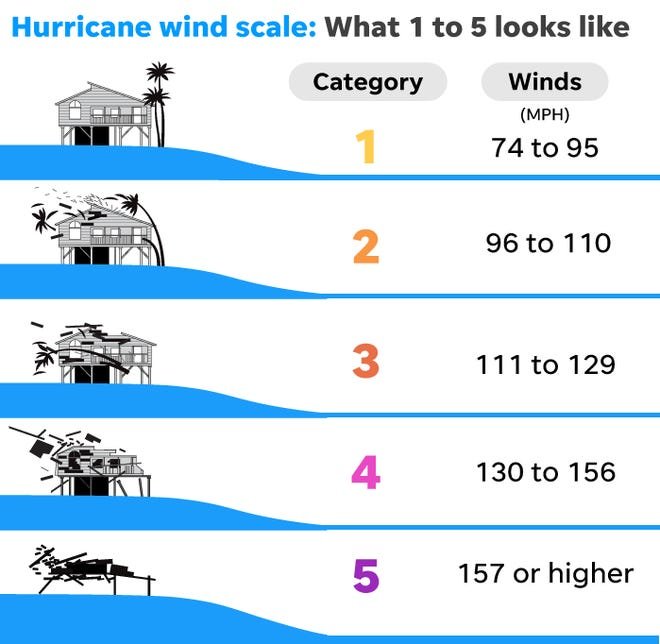Hurricane Helene: Prediction, Impact and Recovery
Hurricane Helene, which struck in late September 2024, has been recorded as one of the deadliest and most destructive hurricanes to hit the United States in decades.
Making landfall as a powerful Category 4 storm, Helene brought immense devastation to the southeastern United States, particularly in Florida’s Big Bend region, before sweeping through neighboring states.
Hurricane Helene: The Perfect Storm
Hurricane Helene began as a tropical depression in the warm waters of the Gulf of Mexico, gaining strength rapidly due to favorable weather conditions. Low wind shear, high relative humidity, and sea surface temperatures exceeding 86°F allowed the storm to intensify quickly.
By September 26, Helene had escalated to a Category 4 hurricane, with maximum sustained winds of 140 mph. Its eye made landfall near Perry, Florida, around midnight, making it the strongest hurricane to hit Florida’s Big Bend region on record.
The storm’s sheer size and strength triggered significant storm surges, heavy rainfall, and high winds across a vast area, resulting in catastrophic damage. Although it weakened into a tropical storm by the time it crossed into Georgia, its torrential rain and wind continued to cause havoc through parts of the Carolinas, Tennessee, and Virginia.
Areas Impacted
The hardest-hit regions were in Florida, North Carolina, South Carolina and Georgia, where Helene made its initial landfall and then progressed inland. The Big Bend area of Florida experienced unprecedented storm surges and flooding, with coastal towns such as Cedar Key, Perry, and surrounding communities suffering significant infrastructure damage. Reports describe entire neighborhoods submerged, and residents had to be evacuated from low-lying areas. Major cities such as Tallahassee also experienced power outages, with over 500,000 people left without electricity during the height of the storm.
As the storm tracked inland, Georgia, South Carolina, and North Carolina experienced massive flooding due to persistent rainfall. Particularly in western North Carolina, rivers and lakes overflowed, causing widespread destruction in towns like Asheville and Morganton. Authorities conducted rescue operations to save stranded residents as roads became impassable, and homes were destroyed. Other states like Virginia and Tennessee saw extensive flash flooding, damaging roads, homes, and businesses.
The Aftermath and Recovery Efforts
The aftermath of Hurricane Helene left communities reeling from the destruction. More than 220 lives were lost, making Helene the deadliest mainland U.S. hurricane since Katrina in 2005. Search and rescue teams were deployed to the affected areas, with emergency responders working tirelessly to help those trapped by floodwaters and debris. Thousands of residents remain displaced, staying in temporary shelters while local governments and FEMA assess the damage and coordinate relief efforts.
In Florida, rebuilding efforts have already started, with the state receiving millions in federal aid. However, recovery will be long and arduous, as many areas were left in ruins. Roads, bridges, and power lines will need substantial repair. Damage to homes and businesses has been estimated to be in the billions of dollars, with the insurance industry bracing for an influx of claims.
Meanwhile, in the Carolinas and other inland states, the cleanup is ongoing. Local authorities have issued warnings about potential landslides and further flooding as saturated ground may not absorb additional rainfall. Restoration of power remains a significant challenge, with utility crews working around the clock to restore electricity to affected regions.
Estimated Economic Damages
The financial impact of Hurricane Helene is projected to be catastrophic, with preliminary estimates indicating damages could reach as high as $250 Billion according to private forecasters at AccuWeather. This includes the costs of rebuilding homes, businesses, and infrastructure, as well as losses incurred by industries across the affected states. Florida, being the epicenter of the hurricane’s landfall, accounts for the bulk of these costs. In Georgia, the Carolinas, and beyond, widespread flooding and damage to agricultural lands and commercial properties have contributed significantly to the overall economic toll. Insurance companies are preparing for a massive influx of claims, and federal and state governments are mobilizing billions in relief funds to assist with recovery and rebuilding efforts.
Local businesses, especially in Florida’s coastal and North Carolina’s rural regions, may face months, if not years, of slow recovery. Additionally, economic disruptions, including lost revenue from halted tourism, agriculture, and industries such as fishing, will have long-term effects.
Environmental Impact
Beyond the human toll, Hurricane Helene left a significant mark on the environment. The storm’s impact on natural ecosystems, particularly along Florida’s coast, is severe.
The storm surge destroyed wetlands, eroded beaches, and affected wildlife habitats. Furthermore, massive flooding in forested and mountainous regions has caused soil erosion, landslides, and pollution of water sources, threatening local wildlife and agriculture.
Floodwaters have also led to concerns about contamination from sewage overflow and chemical spills, particularly in industrial areas hit by the storm. Cleanup teams are working to mitigate these risks, but long-term environmental recovery will likely take years.
On The Horizon: Hurricane Milton
Hurricane Season is not over just yet as the formation of Hurricane Milton is occurring in the Gulf of Mexico right now.
Hurricane Milton is expected to intensify and make landfall as a direct hit on Florida’s west coast.
Areas such as Tampa, Naples and more are expected to endure severe storm surges that could reach as high as 12ft.
Hurricane Preparedness and The New “Normal”
Hurricane Helene stands as a stark reminder of nature’s power and the vulnerabilities many coastal and inland communities face. While recovery is underway, the path to rebuilding is long, and affected regions will require ongoing support. As climate change continues to fuel stronger and more frequent storms, Hurricane Helene’s legacy underscores the importance of preparing for and mitigating future natural disasters.
As more hurricanes develop to finish the 2024 season, make sure to prioritize any and all preparedness measures you have at your disposal. Listen to the local expert authorities on potential evacuation protocols and prioritize the safety of your families and yourself.
Learn About the Devastating Impacts of
Hurricane Helene and Recovery Efforts
Garrison™️ Flood Control provides robust flood protection solutions for homes, businesses, organizations and municipalities. With a wide variety of flood control solutions to choose from, Garrison provides the ability to plan, prepare and protect against numerous levels of flooding.
Our goal is to provide reliable, effective, and affordable flood protection systems that can help mitigate the impact of floods and protect properties and assets. Based in the United States, Garrison’s team of flood experts work with you side by side to help recommend the perfect solutions as well as maximize your protection efforts.
If you would like additional information about Garrison™️ Flood Control Systems, please call 929-299-2099 or email sales@garrisonflood.com.


























